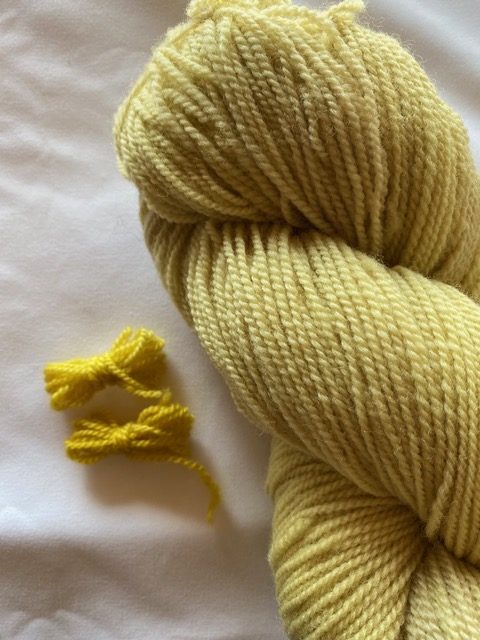After giving away my dairy equipment last month, I was eager to set up the newly vacated milk room in my creamery as a dye lab! I got together a table, some hot plates, big pots for mordanting and dyeing the wool, cleaned out the milk room, and was eager to get started. Melinda is growing indigo, marigolds and coreopsis in our garden, the ranch is currently a-bloom with dandelions, I’ve been saving and freezing my avocado pits, my friend Fran is saving her dead-headed dahlias for me, my friend Bobbie is going to prune her loquat tree and give me the leaves, and our ranch is a ready source of other dye plants including coyote-brush and the invasive French broom. So many possibilities for all my white yarn!
For my first effort, I decided to try dandelions, as they are blooming everywhere right now, tantalizing me with their yellowness. I spent a couple of pleasant hours out in our lamb pasture, accompanied by curious lambs, picking dandelions.
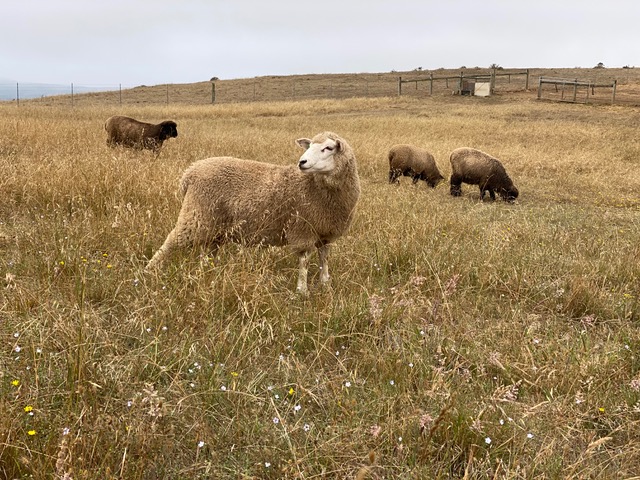
The articles I read on line suggested a 1:1 ratio, so I picked a pound of dandelions and figured I could be able to dye four 4-ounce skeins of yarn with it.
After all the labor of picking the dandelions, I used the “Picture This” app on my phone to confirm the species name for my records, and the app informed me they are “Smooth Cat’s Ear,” also known as “False Dandelion.” Oops. Dyeing is mysterious, and just because flowers have color doesn’t mean they are a good source of dye. If these weren’t real dandelions, that cast some doubt on what color they may give me, but I forged ahead anyway.
I had chosen my lovely soft fingering-weight yarn made from the fleeces of my Corriedale sisters Flora and Nora. While the dandelions were simmering in a pot of water to extract the dye, I pre-mordanted the yarn in an alum solution to prepare it to receive the color.
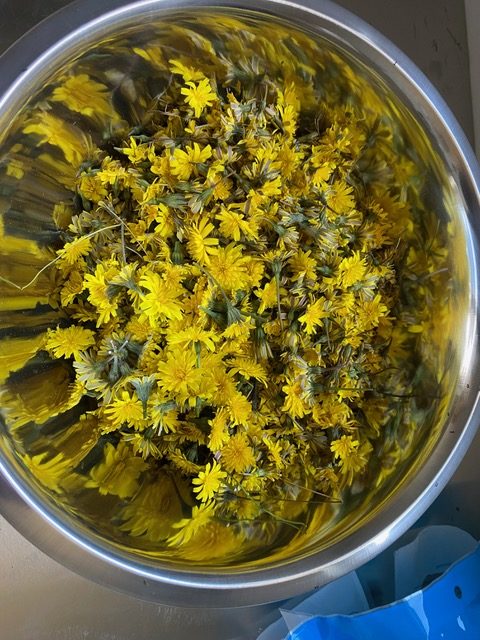
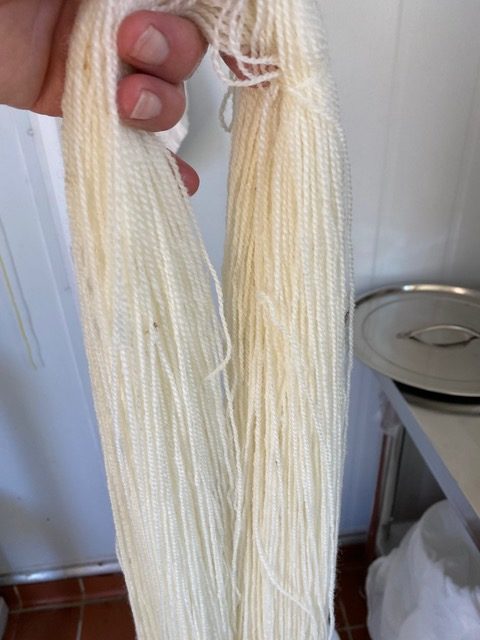
Before committing 4 beautiful skeins to the uncertainty of the dye pot, I snipped a short sample from the white yarn and immersed it in the dye for 15 minutes.
The result was shocking! Within moments the yarn turned a bright, almost neon yellow, and kept that color when I removed it from the bath after 15 minutes.
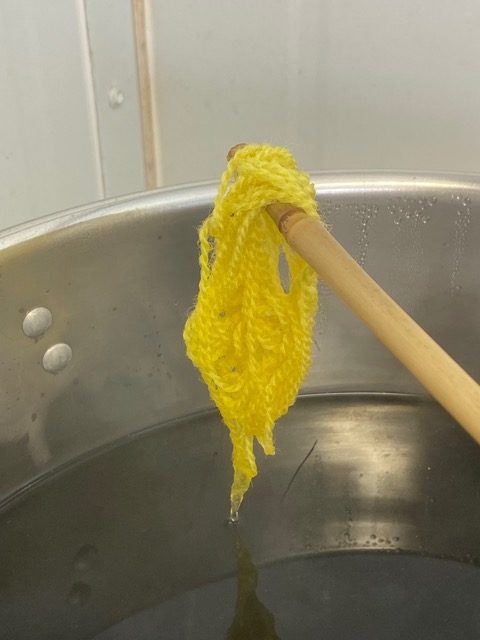
Giddy with delight at getting so much color, I didn’t consider whether I or anyone else might want to wear a neon-yellow garment, and I plunged on with the 4 skeins.
I was rewarded with another unexpected surprise–instead of the neon color of the sample, my 4 skeins picked up a lovely soft mustard-yellow.
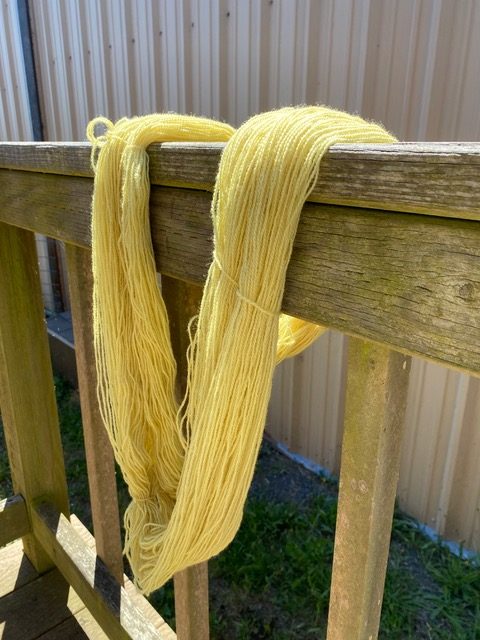
I’m really happy with the color and with the uniformity I achieved in the 4 skeins. And I’m mystified about the difference between the sample and the skeins. It was the same pre-mordanted batch of yarn, cut off of one of the skeins. I did nothing between the test and the dyeing of the skeins to alter the pH of the dye bath, or anything else about it. I held it at the same temperature for both. I think the most likely explanation has to do with saturation–that small yarn sample may have been able to become fully saturated with dye molecules, but when I put a full 16 ounces of yarn into the bath, the quantity of dye molecules in the bath was limiting and so the color the yarn received was less saturated.
However, the little sample grabbed that color almost instantly upon being immersed in the bath–I would think that at least the leading edge of my first skein would have wound up neon yellow. But all 4 skeins, added to the pot in succession, are the same color. So, it remains a bit of a mystery.
I’m planning my next experiment using Bobbie’s loquat leaves, which are supposed to give a lovely pink color. Wish me luck!
